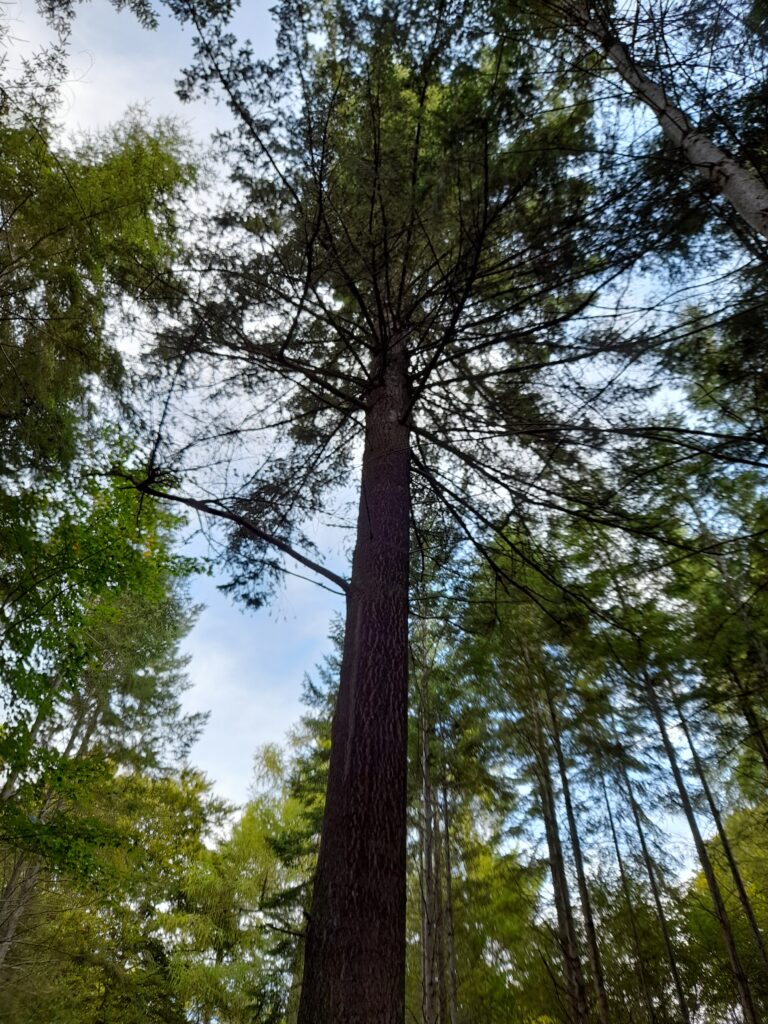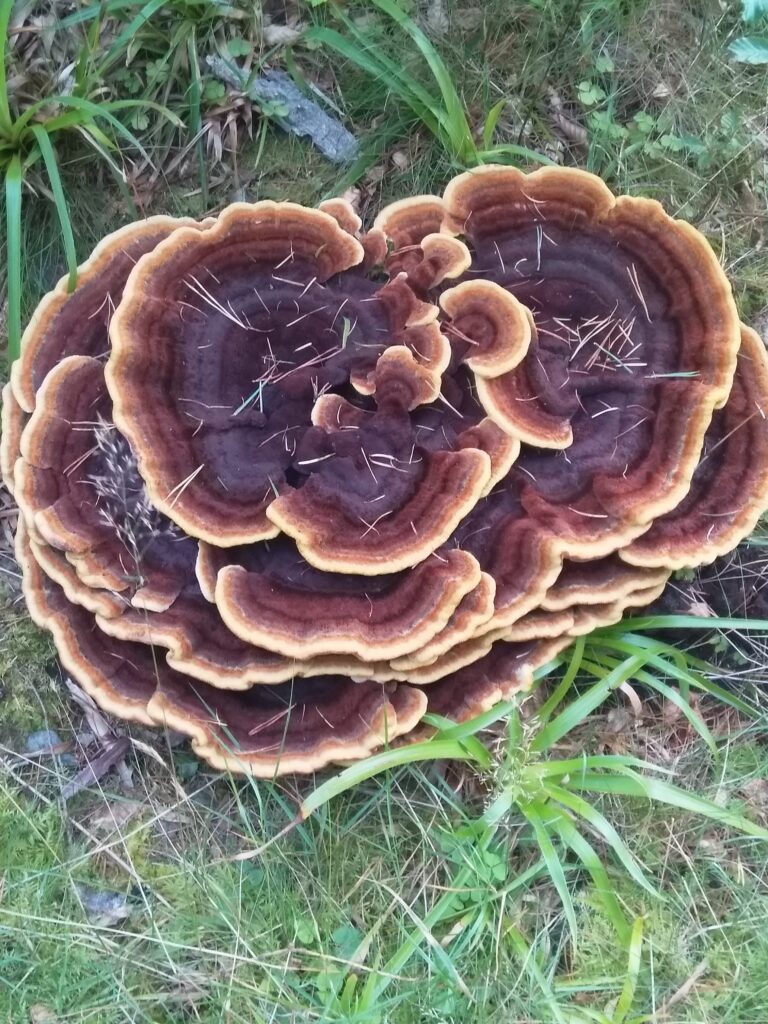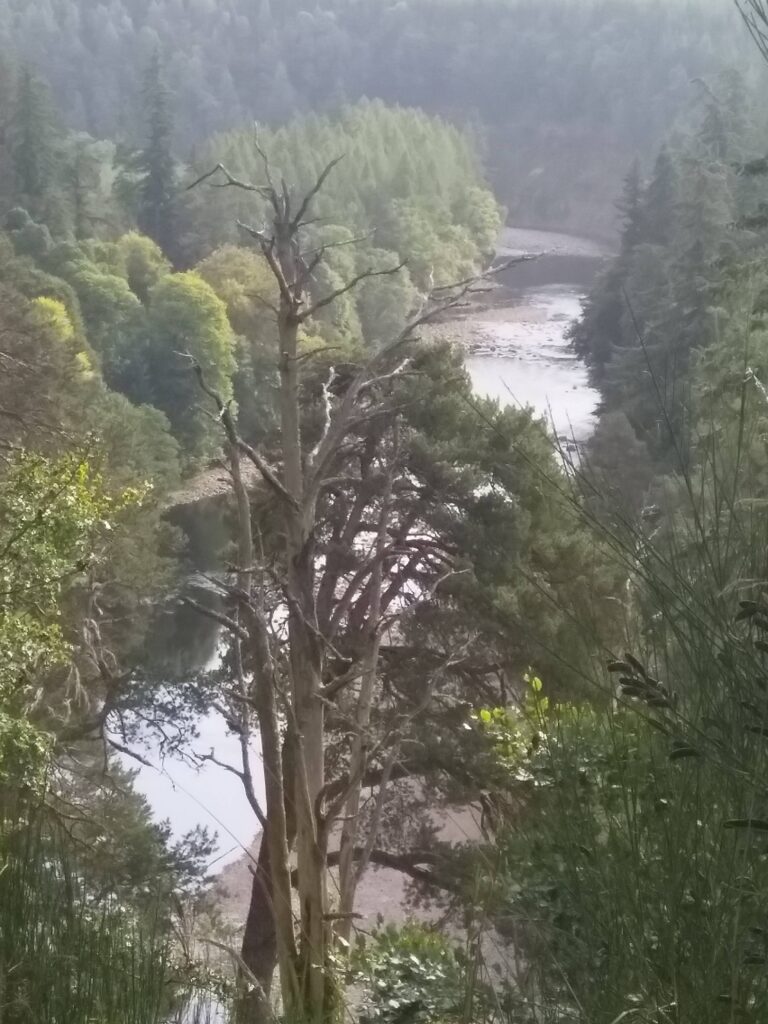25 Field Club members gathered at Conicavel sawmill on a beautiful autumn morning for a guided walk through a small part of the 3,000 acre Darnaway Estate, the property of the Earl of Moray. The walk was led by the Head Forester, Ben Clinch, and his black labrador. Ben not only looks after the Darnaway forest, but is also responsible for other smaller areas of woodland in Moray, and for the forests at Doune Castle near Stirling.
The walk of about 2/3miles, mainly on broad forest tracks, was a very interesting and informative introduction to silviculture, the care and cultivation of woodlands. At Darnaway, trees are an important commercial crop, but the economic value of the forest has to be balanced with the conservation of ecosystems and biodiversity, as well as the historic and aesthetic importance of the site. We were shown the traces of the old boundary wall of the hunting estate, dating from the mid fifteenth century; the importance of hunting ensured the survival of pockets of ancient woodland. But 250 years ago there was very little forest left. It was in the mid-eighteenth century that the Earl embarked on a programme of improvement and new afforestation. The beeches and the exotic species on the estate were first planted at this time. We walked through a commercial plantation of larch, now 34 years old and due to be harvested. The ground flora under the larch trees was more diverse than beneath the beech trees. There was very little growing beneath the beeches; the fallen leaves make the soil acidic and the canopy is so dense the light is excluded. Beech is a vigorous species and can be detrimental to native species such as oak. But the beeches are beautiful, especially in the autumn, so a balance has to be struck between biodiversity and aesthetics.
Ben also demonstrated how to measure the basal area of a tree by using the rule of thumb method, which left some of us confused! Kerstin Keillar gathered a variety of fungi on the walk which were displayed at the end. Some members had their picnic at the car park, and some explored a bit further on their own.
Many thanks to Ben Clinch for sharing his expertise.



